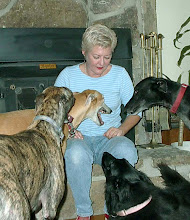Old joke: ask Marines to secure a building and they’ll clear the interior, establish a perimeter and controlled access points. Ask folks in the Air Force and they’ll negotiate a three year lease with an option to buy.
Looking back, I can trace my interest in cultural analysis to two major events in 1991: the Tailhook scandal and the dissolution of the
It wasn’t until 1994, while at the
Once the framework was in place, it seemed fairly obvious that if we understood what creates culture, we should be able to influence how it develops. At the time, I was fascinated by the theory that the Navy could have reduced the probability of the Tailhook scandal by more effectively analyzing and influencing the culture within naval carrier-based aviation. Could women have been introduced into the mix as carrier-based pilots – and combat pilots – in such a way as to make them “us” rather than “not us”? Or was the harassment of the women at Tailhook similar to the treatment of other junior officers and thus evidence of a level of acceptance? Was this a rite of passage gone wrong or one that was simply inappropriate in civilian terms? If so, how could the Navy effectively integrate “other” into combat pilot ranks without blundering so massively – and overreacting, perhaps?
Throughout history – and fiction! – there have been many attempts to develop mathematical representations of group dynamics. One of my favorites were the
Here’s what we know: people form groups. Always. The degree to which they crave closeness of association and to which they identify with the group are a function of the individual.
This is why Twitter and Facebook are so astoundingly popular. Their popularity is entirely a function of the inherent human drive to establish community.
Why is this important?
Because intentionally focusing on the process of assimilation and the solidness of the group unity can have profound effects on the development of the community, which has huge implications on the sense of belonging in all sorts of organizations: volunteer organizations, the military, and in commercial consumer bases. You want people who feel like they belong. Belonging – and, closely related, ownership – are very very good things for any organization.
Don’t leave it to chance. Create intentional cultures.
More later on the process of creating community and culture: why it matters and how to do it.
Cyn Mobley



